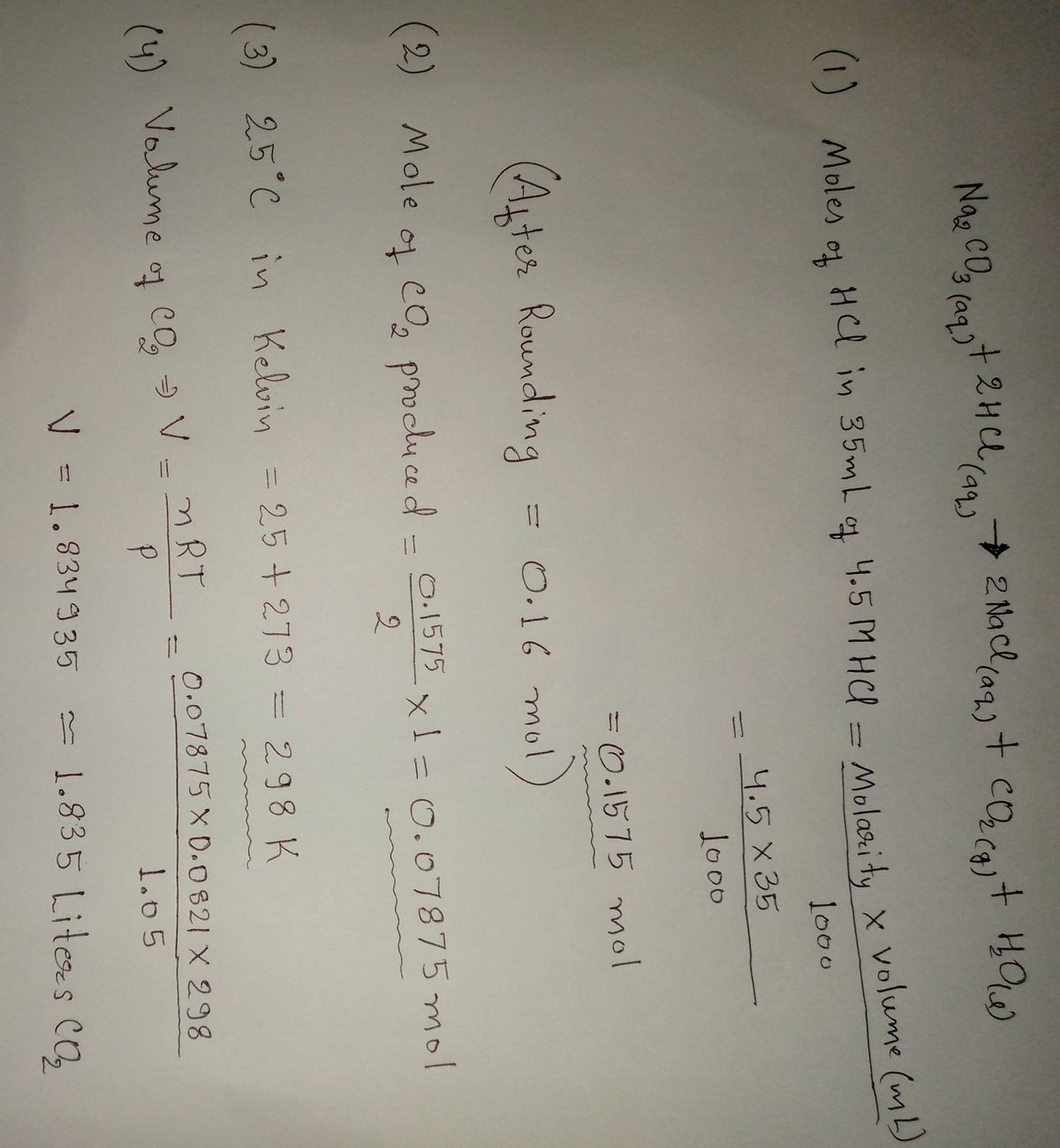NazCOsaa +2HClaa 2Naclag + COze + H2Om How many moles are found in 35ml of 4.5M HC? (Select ) the reaction above? (Select] How many moles of COzie will be produced when 35ml of 4.5M HCI completely reacts according to What is the temperature 25°C in Kelvin? [Select] How many liters of CO2le will be produced when 35mL of 4.5M HCI completely reacts according to the reaction above at 25°C at 1.05atm? [ Select] Gas laws: VỊP1 = V2P2 V;T2 = V2T1 VịPiT2 - V2P2T1 Tu Tu PV = nRT (R=0.0821 L-atra mol-K
Thermochemistry
Thermochemistry can be considered as a branch of thermodynamics that deals with the connections between warmth, work, and various types of energy, formed because of different synthetic and actual cycles. Thermochemistry describes the energy changes that occur as a result of reactions or chemical changes in a substance.
Exergonic Reaction
The term exergonic is derived from the Greek word in which ‘ergon’ means work and exergonic means ‘work outside’. Exergonic reactions releases work energy. Exergonic reactions are different from exothermic reactions, the one that releases only heat energy during the course of the reaction. So, exothermic reaction is one type of exergonic reaction. Exergonic reaction releases work energy in different forms like heat, light or sound. For example, a glow stick releases light making that an exergonic reaction and not an exothermic reaction since no heat is released. Even endothermic reactions at very high temperature are exergonic.
![NazCOsaa +2HClaa 2Naclag + COze + H2Om
How many moles are found in 35ml of 4.5M HC? (Select )
the reaction above? (Select]
How many moles of COzie will be produced when 35ml of 4.5M HCI completely reacts according to
What is the temperature 25°C in Kelvin? [Select]
How many liters of CO2le will be produced when 35mL of 4.5M HCI completely reacts according to
the reaction above at 25°C at 1.05atm? [ Select]
Gas laws:
VỊP1 = V2P2
V;T2 = V2T1
VịPiT2 - V2P2T1
Tu
Tu
PV = nRT (R=0.0821
L-atra
mol-K](/v2/_next/image?url=https%3A%2F%2Fcontent.bartleby.com%2Fqna-images%2Fquestion%2F807e221e-9d6c-4679-98f6-c44e5262740e%2F88ffeac7-aa37-42f9-9bbe-077fc46f3dff%2Fgsbqr7h.jpeg&w=3840&q=75)
As balanced chemical reaction given in question. We can calculate moles of HCl by using following formula-
Moles = molarity × volume in mL /1000
Also temperature from degree celsius (°C) to Kelvin (K) converted by -
Kelvin temperature = (°C) + 273
And volume of gas can be calculated by using ideal gas equation-
V = nRT/P
Where V = volume of gas , n = number of moles of gas , R = gas constant = 0.0821 L atm / mol K , T= temperature in Kelvin, P = pressure in atm.

Trending now
This is a popular solution!
Step by step
Solved in 3 steps with 1 images









